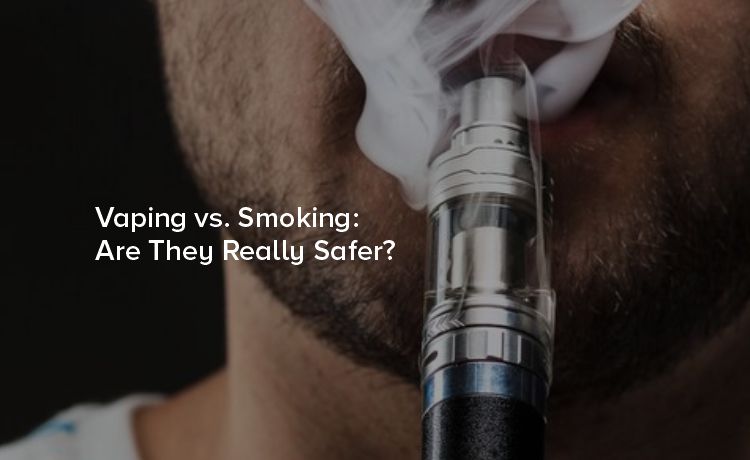
Smoking has long been associated with severe health risks, prompting millions of smokers worldwide to search for less harmful alternatives. Enter vaping, an increasingly popular option marketed as a “safer” substitute. But is vaping truly less harmful than smoking traditional cigarettes?
Before we get into the nitty-gritty, it’s important to understand what vaping and smoking involve.
Smoking traditional cigarettes involves burning tobacco, which then releases thousands of chemicals, over 70 of which are known to cause cancer. Besides nicotine, cigarettes also contain substances such as tar, carbon monoxide, and ammonia, many of which are harmful or toxic to the human body.
Vaping, on the other hand, involves inhaling an aerosol (commonly referred to as "vapour") created by heating a liquid. This liquid, often containing nicotine, flavourings, and other chemicals, is housed in devices such as vape pens and e-cigarettes. Unlike smoking, vaping does not involve combustion and is marketed as a “cleaner” way to consume nicotine.
At first glance, vaping seems less harmful because it doesn’t produce the same tar and carbon monoxide associated with traditional smoking. However, the reality is far more complex.
It’s no secret that smoking is deadly. According to the World Health Organization (WHO), smoking kills more than 8 million people annually. It’s directly linked to:
Smoking during pregnancy can also lead to complications, including premature births and low birth weight.
While vaping is often marketed as a safer alternative, it is not without its dangers. Since vaping is relatively new, its long-term effects remain largely unknown. However, initial research has linked vaping to issues such as:
Vaping-related lung injuries, often called EVALI (E-cigarette or Vaping-Associated Lung Injury), have also raised significant alarms. According to the US Centers for Disease Control and Prevention (CDC), these injuries led to over 70 deaths and thousands of hospitalisations in recent years.
It’s true that vaping eliminates some of the harmful by-products of smoking, like tar and carbon monoxide. Public Health England (PHE) sparked considerable debate when it stated that vaping is 95% less harmful than smoking. However, this figure is contested by other health organisations, with researchers urging caution.
Here’s a nuanced point of comparison based on current evidence:
Smoking and vaping both deliver nicotine, which is addictive and has health implications in terms of heart rate and blood pressure. For people trying to quit smoking, vaping devices with controlled nicotine levels might reduce dependency more gradually. That said, many products offer dangerously high nicotine concentrations, particularly in certain disposable vape brands.
While smoking generates thousands of chemicals, vaping typically involves fewer. But fewer chemicals doesn’t necessarily mean safer. Some chemicals in vape liquids, such as formaldehyde and acrolein, are still toxic.
Secondhand smoke is recognised worldwide as harmful, increasing the risk of cancer and respiratory issues in non-smokers. The aerosol produced by vaping is thought to be less harmful, but it still contains nicotine and potentially harmful substances. More research is needed to fully assess its impact.
One of the biggest concerns surrounding vaping is whether it acts as a gateway to smoking, especially for young people. A recent study by the British Medical Journal found that teenagers who vape are three times more likely to start smoking compared to those who don’t.
Flavoured vape liquids, which mimic candy, desserts, or fruit, appeal to younger audiences and make vaping highly attractive. This has prompted regulatory crackdowns in several countries, restricting the sale of certain flavoured products.
If you or someone you know is a smoker trying to quit, you may wonder whether vaping is a viable tool.
Some research suggests vaping can help people quit smoking by mimicking the physical habit of smoking without involving combustion. It’s particularly useful when combined with behavioural support or nicotine replacement therapies.
However, it’s important to be cautious when relying solely on vaping to quit. Without a structured plan to eliminate nicotine altogether, many individuals end up replacing one addiction with another.
Proven cessation tools such as nicotine patches, gum, lozenges, or prescribed medications, alongside counselling, remain key strategies recommended by health professionals.
It’s easy to overlook the broader implications of vaping and smoking. Here’s how they compare:
Environmental Concerns
Societal Stigma
The cultural view of smoking has shifted significantly, with policies discouraging its use in public spaces. Vaping is less heavily stigmatised but has faced backlash recently due to its role in targeting younger demographics.
When comparing vaping to smoking, it’s not simply a choice of “good vs. bad” but rather “bad vs. less bad.” While evidence suggests vaping is less harmful than smoking, it is by no means risk-free. Both habits carry significant health and societal concerns that deserve careful consideration.